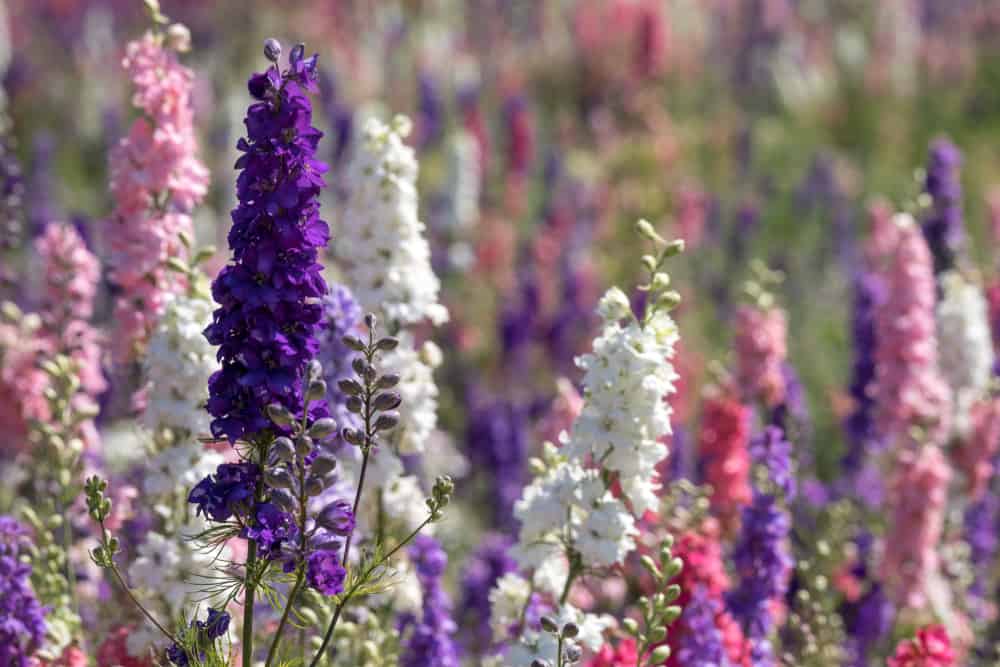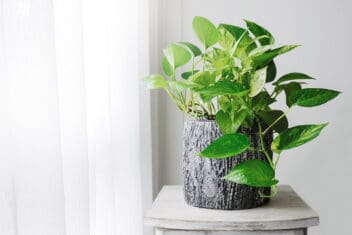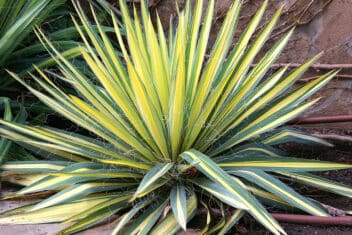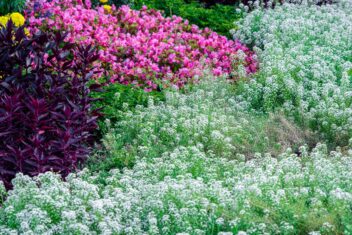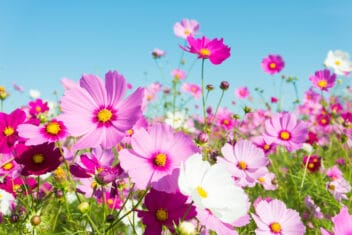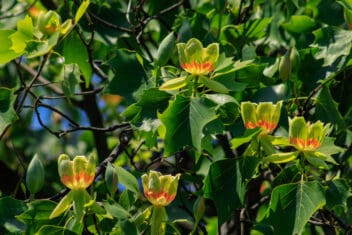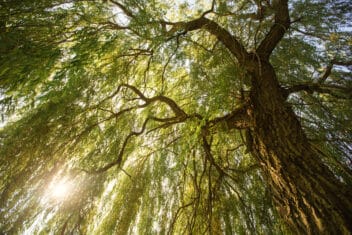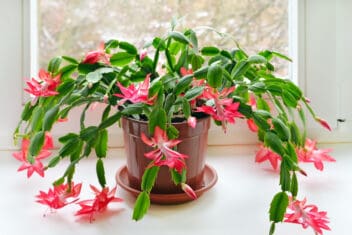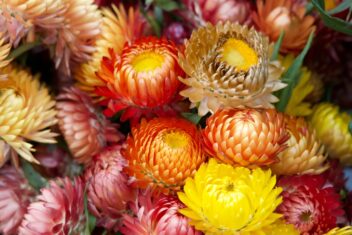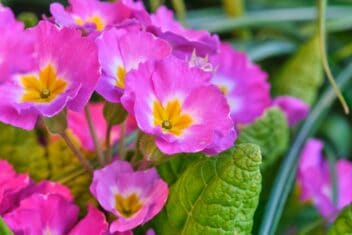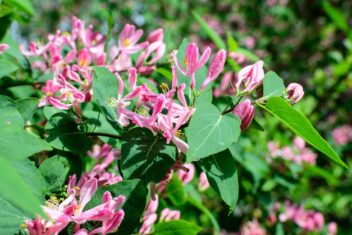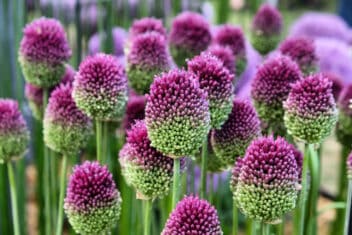Do you love English gardens of old and want to recreate the vintage feel in your space? Are you looking for beautiful flowers to add to your garden borders? Delphiniums can do it all, and you’ll be the envy of all your friends.
Delphiniums come in many sizes, from giants to dwarf varieties, and provide versatile solutions from pots to brightening fence lines and adding colorful splendor to your space.
Delphinium is a stunning plant that will wow you and anyone visiting your garden, including bees and hummingbirds. Here’s what to know about growing delphiniums:
What Are Delphiniums?
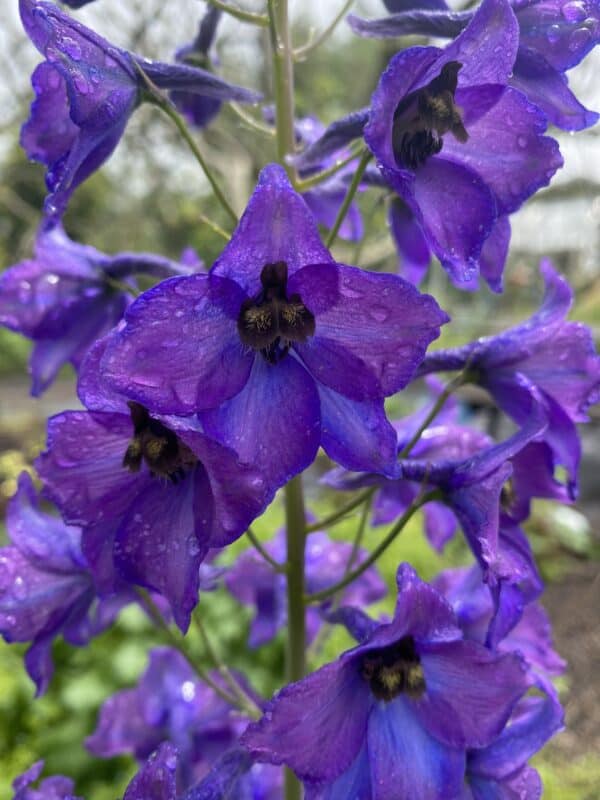
Delphiniums are a short-lived perennial in USDA Growing Zones 3 to 8 with cooler conditions, but can be treated as a biennial or an annual in warmer regions.
Part of the Ranunculaceae family, otherwise known as the buttercup family, delphiniums make up 370 of the 2,000 annual and perennial plant species in this family. They add height, color, and impact to borders and cut flower arrangements.
New varieties are being developed to be more heat tolerant, but generally, delphiniums appreciate moderate temperatures. The taller types need protection from wind, or they’ll tip over.
10 Excellent Delphiniums
With characteristics of larkspur, but with a more prominent presence, delphiniums come in various colors that will suit anyone’s color pallet and garden. Here are a few of our favorite options for growing delphiniums in the home garden.
1. King Arthur

This is a stunning example of what delphiniums have to offer, with deep purple to blue-toned petals and a white center. It’s almost like someone painted this beauty by hand. Great in Zones 3-8, it likes full sun without the heat, and can grow up to six feet tall.
2. Galahad
If you like pure white on solid green, this is a must. ‘Galahad’ grows to about 4-6 feet in the right conditions and explodes with pure white flowers on a multi-tiered stem. It keeps on giving in Zones 3-8 and is part of the Pacific Giant series.
3. Million Dollar Blush
This is a shorter variety reaching approximately 2-3 feet. Shorter types are worth considering if wind is an issue. Blush pink tones with large, double petals on mass. ‘Million Dollar Blush’ tolerates partial shade or full sun areas in Zones 3-7.
This plant is more heat tolerant than other types, so if you dream of growing delphiniums but thought your climate was too warm, try this.
4. Highlander Blueberry Pie
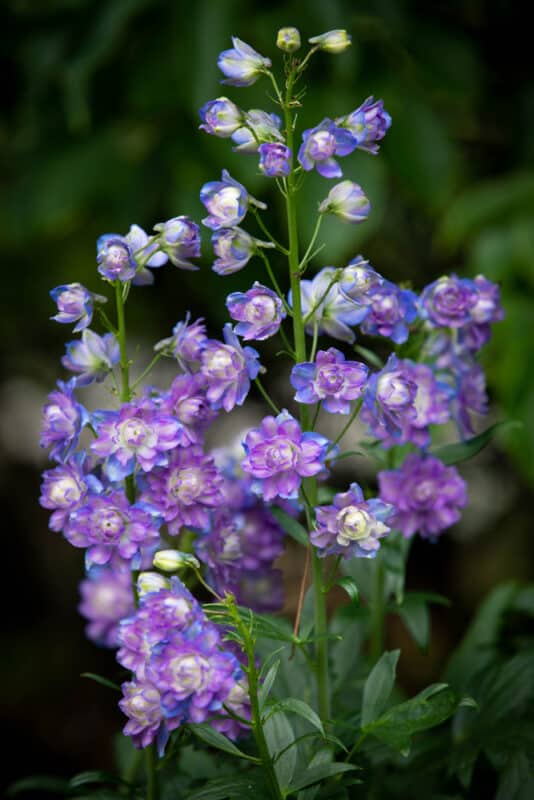
This delphinium is unique and has a side helping of whipped cream. Its beautiful two-toned, double frilly petalled blooms start with a pink tint and then change color to blue as they mature. The flowers maintain a creamy white center.
It’s a shorter cultivar, perfect for cut flowers or if you don’t want the height in your garden borders that the giant delphiniums give. Good in Zones 3-7.
5. Magic Fountain White
This member of the Magic Fountain series speaks of pure vintage indulgence. Not pure white as the brown to black centers bring a contrasting focus that draws you into the elegance of this 2-3 foot compact delphinium.
It will tolerate some shadier spots in the garden, but happy with the sun as well. It’s a perfect delphinium for containers in Zones 3-7.
6. Black Knight
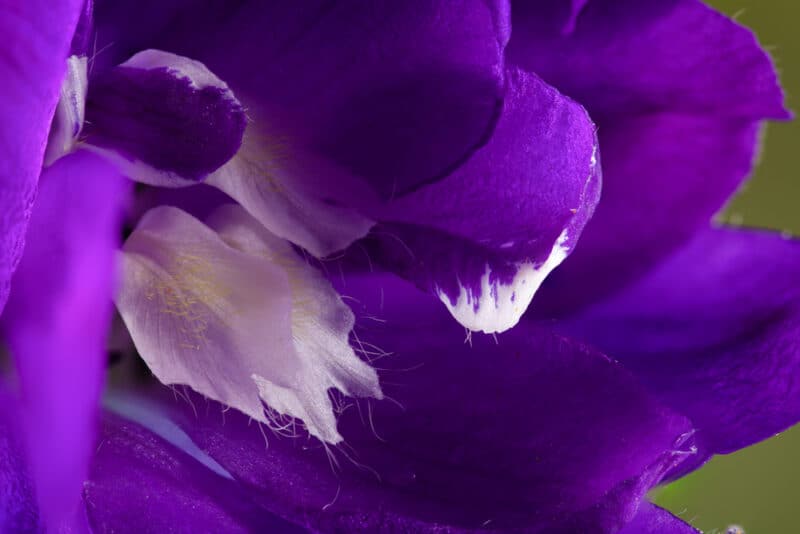
The vibrant deep blue to purple petals and the distinctive bumble bee center of this tall impressive giant delphinium ticks all the boxes. Hardy in Zones 3-8 and grows to about 5-6 feet in height. This one is part of the Pacific Giant series and good for those new to growing delphiniums.
7. Astolat
‘Astolat’ is part of the elatum species, often referred to as candle larkspur. This is due to the way the blooms branch out from the stem like tall candles. Being a tall variety growing to 4-6 feet, protection from the wind is essential.
‘Astolat’ has flowers with subtle creamy white centers and offers purple to vintage pink tones. Perennial and hardy in Zones 3-8, it’s a sun lover with a reasonable tolerance to heat if fed and watered appropriately.
8. Highlander Bolero
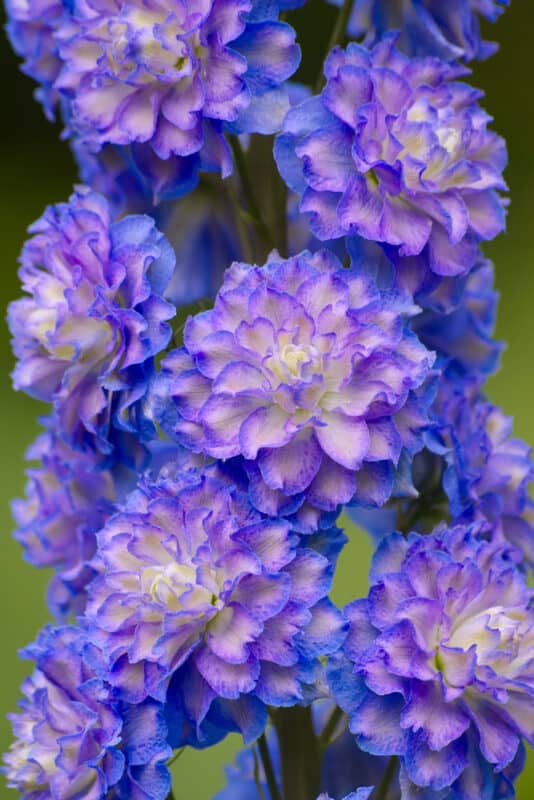
This is in the top ten because its blooms differ greatly from others available. With tight small petals on large flower heads, ‘Highlander Bolero’ provides two-toned hues of electric blue to pinky purple with cream centers. It looks like someone has tie-dyed it.
It’s a smaller type of delphinium reaching between 2-4 feet, but this makes it more suitable for gardens that are more exposed to wind. Perennial in Zones 3-7, it likes at least 6-8 hours of sun daily.
9. Cliveden Beauty
‘Cliveden Beauty’ gives pastel baby blue blooms in a single form and is reminiscent of a Victorian manor flower garden. With long stems of fountain flowers, its a member of the Belladonna range, which generally grow between 2-4 feet tall, and 24 inches to 36 inches wide. Belladonna delphiniums can be challenging to grow, however is a longer living delphinium. If you are a seasoned grower in zones 3-7 this is the one for you.
10. Princess Caroline
If you aren’t a fan of the blue to purple or vintage pink and white check out Princess Caroline. With special coral tones from dark to light as it ages, its quite unusual, and a show stopper for the garden or cut flower arrangement.
Part of the elatum species, it produces double-headed, fountain-flowing blossoms in large numbers and with sturdy stems. ‘Princess Caroline’ grows 2-3 feet tall and is another one that’s happy with partial shade in Zones 3-7.
Growing Delphiniums From Seed
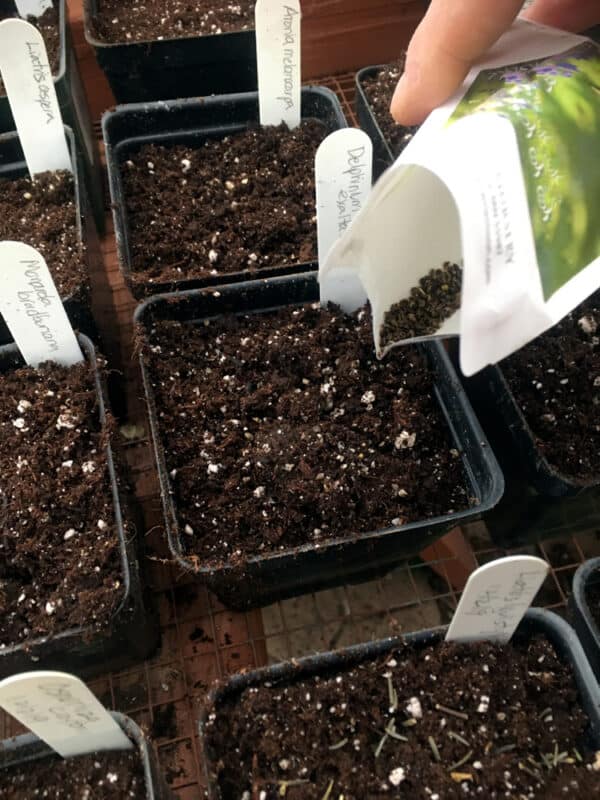
Growing delphiniums from seed saves money and gives you more color or variety options. Delphiniums are happy when direct sown or transplanted, so long as they have the right weather and soil conditions.
Delphiniums flower the most prominently in their second to third year, although some new varieties are annuals, so they flower in the first year. If you leave some flowers to mature and develop seeds, they will direct sow themselves for the following year.
Some of the new varieties coming through are more resilient to extreme temperatures, and it’s worth collecting your own seed to save for next season.
Delphinium seeds germinate within 10-20 days in temperatures around 65-70°F. Start sowing eight weeks before the last frost of spring or direct sow in early summer.
Delphinium seeds can be tough to get started with both transplanting and direct sow methods. Cold stratification is a good step to triggering them.
To do this, store the seeds in the fridge for a few months before sowing or place them in between a moist paper towel in a plastic bag in the fridge for 36 hours before sowing them. Sow the seeds in starting mix, approximately 1/8 inch deep.
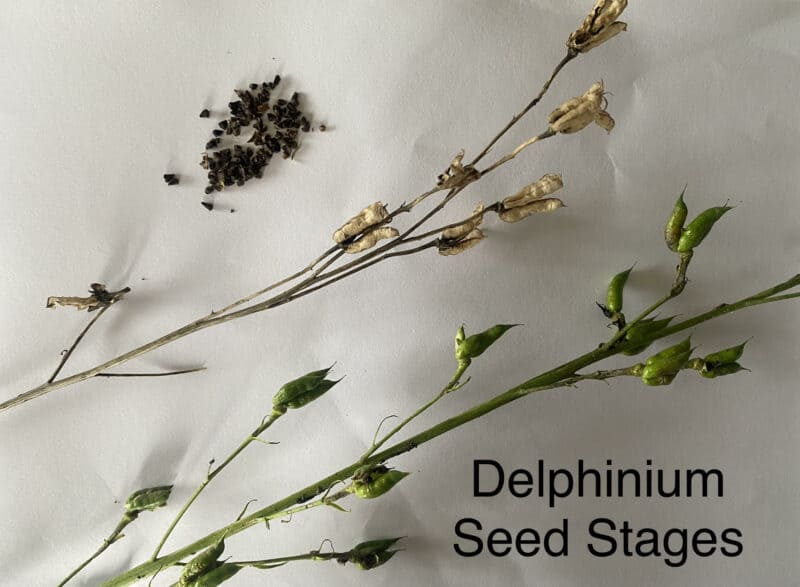
It’s not necessary to pinch out seedlings because, with some varieties, flowering as quickly as possible needs to be encouraged. Place the seedlings in an area maintaining 50-55°F.
To transplant, prepare the ground with compost and harden off the seedling. Space them 12-18 inches apart.
How to Care for Delphiniums
Place new plants in holes no deeper than the pot they were grown in with good compost and keep the soil moist but not saturated.
These plants need 6-8 hours of sun. Stake larger varieties to protect from wind. Feed with a good quality liquid fertilizer every two weeks within the blooming period.
Mulch in fall, keeping the mulch about two inches thick and away from the plant’s base.
Delphiniums are hungry plants, so side-dress them with compost or manure as they start to flower.
To harvest seeds for multiplying your plants, let the pollinators work their magic and for the seed pods to mature. Deadhead spent flowers or cut back to near the base to encourage more growth and blooms.
How to Multiply Delphiniums by Taking Cuttings
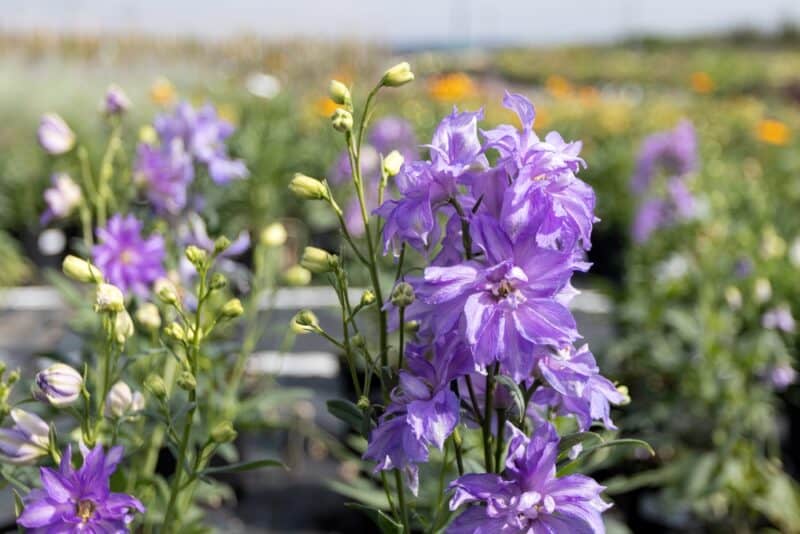
Delphiniums can be multiplied by taking cuttings from new shoots that grow in spring. Delphiniums are herbaceous plants, meaning they die back to the ground, and if perennialized, the roots stay alive for the next growing season.
With herbaceous cuttings, the new shoot must be cut below the ground where the stem isn’t hollow. This is known as basal propagation, meaning the base of the soil. Rooting hormone can be used to speed up the growing process, but it’s not always necessary.
Large clusters of perennialized delphiniums can be divided at the roots and placed in different parts of the garden. Early morning processing for any propagation technique is best.
Keep all developing plants protected from extreme heat or cold and wind. Moisten at the soil level, but do not over water, as that can reduce the success rate dramatically.
Delphinium Pests and Problems
Growing delphiniums can be challenging when they’re young, but once established, they are hardy and carefree.
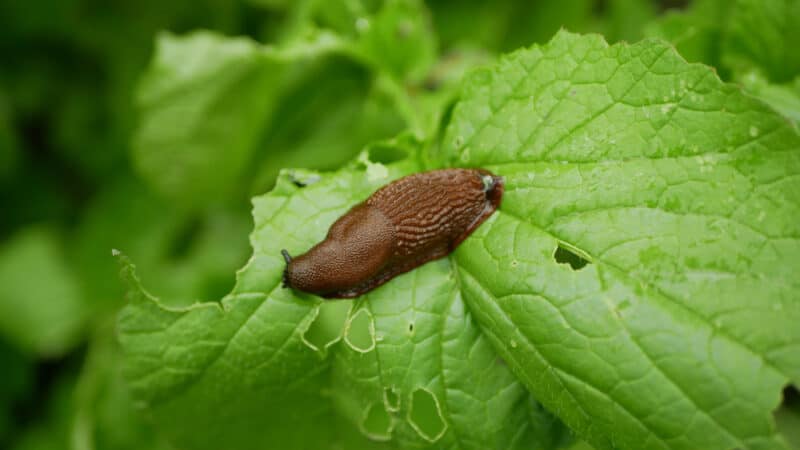
Loved by many pollinators, butterflies, bees, and hummingbirds, they are also magnets for some less admired creatures, such as:
- Slugs and snails
- Caterpillars
- Aphids
- Mites
- Leaf Miners
Delphiniums are toxic. They can cause skin irritation and are not to be ingested. This does mean that they are relatively safe from rabbits and deer, so try growing delphiniums if you’ve found herbivores eat your other flowers.
Common diseases that can affect delphiniums include:
- Powdery Mildew
- Bacterial Leaf Spot
- Crown and Root Gall
- Botrytis Blight
- Stem Canker. This is a fungus that infects the plant through damage to the roots. Usually, a sign of this is water-soaked lesions on stems and petioles. Leaves turn yellow before curling. The delphinium often dies. Remove diseased plants, plant disease-free seedlings, and practice good crop rotation.
Make sure you space plants appropriately for good airflow between them, don’t over-water, and keep plants healthy with a balanced fertilizer. Other than that, growing delphiniums isn’t too hard!
